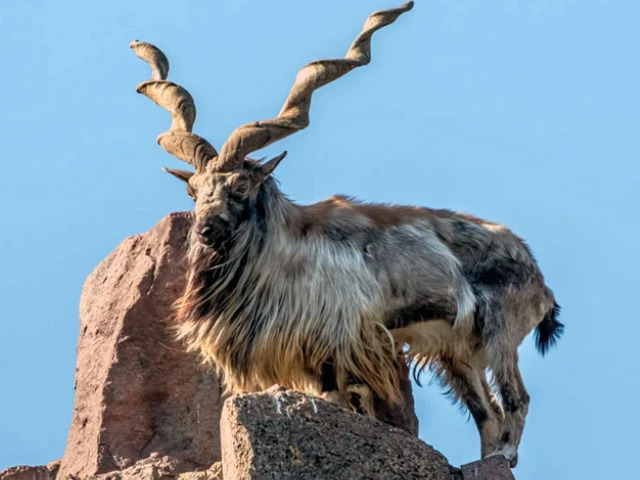Pakistan, May 24 — Today marks the observance of the International Day of the Markhor, aimed at increasing global awareness regarding the conservation of one of Central and South Asia’s most distinctive and threatened wildlife species. Established by the United Nations in 2024, this day not only highlights the importance of safeguarding these animals but also celebrates their role as Pakistan’s national mammal.
The markhor (Capra falconeri), known for its distinctive spiral horns, inhabits high-elevation woodlands and rugged landscapes ranging from 600 to 3,600 meters above sea level. This animal can be found in the mountains across Pakistan, Afghanistan, India, Tajikistan, Turkmenistan, and Uzbekistan. As an essential part of the ecosystem, this species also holds significant cultural importance in various nations.
Even though it holds significance, the markhor encounters increasing dangers like unauthorized hunting, habitat reduction because of human encroachment, and global warming. Specialists caution that the existence of this species is under threat, with merely around 5,700 fully grown specimens remaining in their natural environment. Each acknowledged subspecies, which includes the flared-horned, straight-horned, and Bukhara markhor, is classified as either endangered or critically endangered.
Currently, the IUCN (International Union for Conservation of Nature) lists the markhor as “Near Threatened.” Since 1992, it has been safeguarded under Appendix I of the CITES treaty, which prohibits international commerce with exceptions for limited, carefully managed instances.
Conservationists advocate for more robust initiatives, such as community-driven wildlife conservation, intensified anti-poaching measures, and economic benefits through ecotourism. They stress that safeguarding the markhor is crucial for maintaining biodiversity and enhancing local economies, which makes it essential not just for Pakistan but for the whole area.






